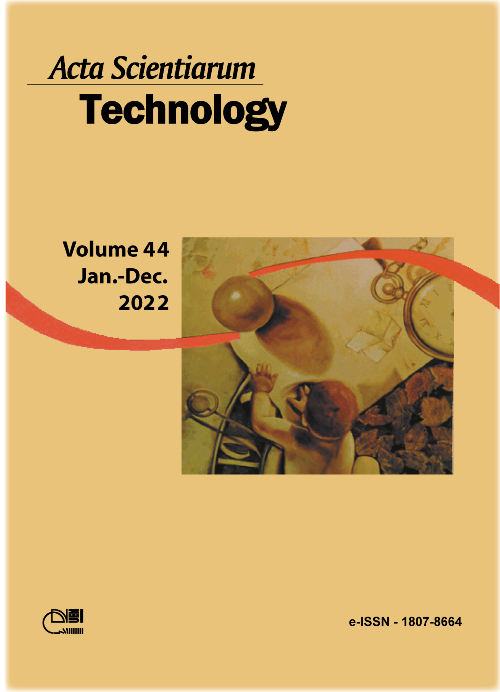Study of the geotechnical behavior of soil-cement reinforced with plastic bottle fibers
DOI:
https://doi.org/10.4025/actascitechnol.v44i1.57826Palavras-chave:
Fiber reinforcement; soil improvement; soil-cement-fiber; plastic fibers.Resumo
This study aimed to evaluate the influence of adding plastic bottle fibers to soil-cement mixtures and the possible improvements generated by the addition of a blend of two types of additives, namely, additive 1 (waterproofing improver) and additive 2 (adhesion enhancer), in the compactability and shear strength parameters of soil-cement-plastic fiber mixtures, considering a tropical residual soil. The fibers used in this study are made of Polyethylene Terephthalate (PET), produced from soft drink bottles, and added to the soil with 2 mm width and 1 cm length, in the content of 1% in relation to soil dry mass. Also, contents of 3% and 5% Portland cement, in relation to soil dry mass and two additives, additive 1 at a ratio of 0.25 kg m-³ dry soil and additive 2 at a ratio of 0.60 kg m-³ dry soil, were used to evaluate the possible effect of these variables on the investigated engineering behavior parameters. The compaction results indicated that the inclusion of PET fibers in soil-cement mixtures tends to decrease the maximum dry unit weight compared to fiber-free mixtures. Also, if compared to soil-cement-fiber mixtures, the incorporation of additives to soil-cement-fiber composites resulted in higher values of maximum dry unit weight and lower values of optimum moisture content, but still maintaining values lower than obtained for compacted soil. Results of the direct shear test showed enhanced shear strength with the addition of fibers to soil-cement, for both the parameter of cohesion and the internal friction angle of the material in comparison to fiber-free composites, which demonstrates the potential application of these composites in geotechnical works.
Downloads
Downloads
Publicado
Como Citar
Edição
Seção
Licença
DECLARAÇíO DE ORIGINALIDADE E DIREITOS AUTORAIS
Declaro que o presente artigo é original, não tendo sido submetido í publicação em qualquer outro periódico nacional ou internacional, quer seja em parte ou em sua totalidade.
Os direitos autorais pertencem exclusivamente aos autores. Os direitos de licenciamento utilizados pelo periódico é a licença Creative Commons Attribution 4.0 (CC BY 4.0): são permitidos o compartilhamento (cópia e distribuição do material em qualqer meio ou formato) e adaptação (remix, transformação e criação de material a partir do conteúdo assim licenciado para quaisquer fins, inclusive comerciais.
Recomenda-se a leitura desse link para maiores informações sobre o tema: fornecimento de créditos e referências de forma correta, entre outros detalhes cruciais para uso adequado do material licenciado.















